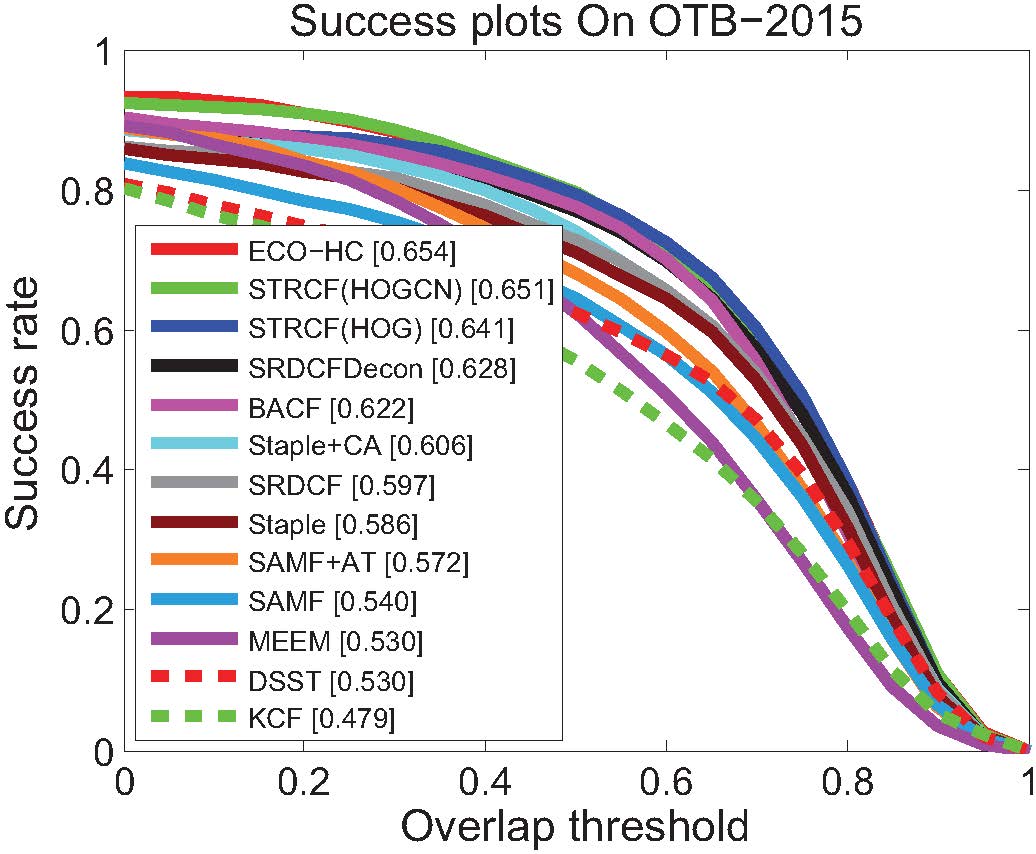Learning Spatial-Temporal Regularized Correlation Filters for Visual Tracking
Discriminative Correlation Filters (DCF) are efficient in visual tracking but suffer from unwanted boundary effects. Spatially Regularized DCF (SRDCF) has been suggested to resolve this issue by enforcing spatial penalty on DCF coefficients, which, inevitably, improves the tracking performance at the price of increasing complexity. To tackle online updating, SRDCF formulates its model on multiple training images, further adding difficulties in improving efficiency. In this work, by introducing temporal regularization to SRDCF with single sample, we present our spatial-temporal regularized correlation filters (STRCF). Motivated by online Passive-Agressive (PA) algorithm, we introduce the temporal regularization to SRDCF with single sample, thus resulting in our spatial-temporal regularized correlation filters (STRCF). The STRCF formulation can not only serve as a reasonable approximation to SRDCF with multiple training samples, but also provide a more robust appearance model than SRDCF in the case of large appearance variations. Besides, it can be efficiently solved via the alternating direction method of multipliers (ADMM). By incorporating both temporal and spatial regularization, our STRCF can handle boundary effects without much loss in efficiency and achieve superior performance over SRDCF in terms of accuracy and speed. Experiments are conducted on three benchmark datasets: OTB-2015, Temple-Color, and VOT-2016. Compared with SRDCF, STRCF with hand-crafted features provides a 5 times speedup and achieves a gain of 5.4% and 3.6% AUC score on OTB-2015 and Temple-Color, respectively. Moreover, STRCF combined with CNN features also performs favorably against state-of-the-art CNN-based trackers and achieves an AUC score of 68.3% on OTB-2015.
PDF Abstract CVPR 2018 PDF CVPR 2018 Abstract

 OTB
OTB
 OTB-2015
OTB-2015
 VOT2016
VOT2016
 VOT2017
VOT2017